
The Breed History
The origins of this breed are easily traced from the 19th century
forward in Siberia. The Chukchi people in northeastern Asia were
likely the original breeders of these hardy dogs. In Alaska, imports
were used for sled dog racing in 1909. One of the famed serum dog
teams that delivered life-saving serum from Neoma to Nome Alaska
during the diphtheria outbreak of 1925 consisted of Siberians. The
AKC recognized the breed in 1930.
Breeding for Function
The Chukchi people of Northeast Asia developed this breed for use
as a sled dog. Emphasis was on endurance and tolerance of cold but
selection also focused on those dogs requiring minimal food intake.
They have been used extensively in Antarctic expeditions, and in
search and rescue units during the Second World War. Today, they
are most commonly seen in a companionship role, but they are still
found out on the trail, ski-joring and pulling sleds.
Physical Characteristics
Height at Withers: female 20-22" (51-56 cm), male 21-23.5"
(53-59.5 cm).
Weight: females 35-50 lb (16-22.5 kg), males 45-60 lb (20.5-27 kg).
Coat: Medium-length, double coat is very dense, soft and wooly
in the undercoat, and outer coat hairs are straight. Markings on
the head are variable, and the base color varies widely from black
through white, and white legs and chest are common.
Longevity: 11-14 years
Points of Conformation: The Siberian Husky is medium in size,
compact in conformation, with a very dense fur. Gait is agile and
quick, smooth and ground covering with little apparent effort. His
bushy tail is erect when alert, carried over the back in a sickle shape,
but not deviated to the sides. The muzzle is straight in profile,
gradually tapering, with a well-defined stop. Almond-shaped eyes
are blue, brown, parti-colored or odd-eyed (one of each). They are
slightly slanted upwards laterally, and are moderately wide-set.
Ears are set high, triangular and medium in size, standing erect,
and have semi-pointed tips and thick leather. Lips are tight and
close, and the nose can have variable pigmentation as long as it
is synchronized with coat color. The neck is medium in length and
muscling with a slight arch. The thorax is deep and somewhat
laterally flattened; ribs are well sprung. The topline is level. They
possess straight limbs which are moderately boned and muscled.
Foreleg dewclaws may be removed, while the rear ones are usually
removed. Feet are oval, medium sized and possess plenty of fur
between the toes. Pads are thick.
Recognized Behavior Issues and Traits
Reported breed characteristics include: Independent streak,
alert, gentle, friendly, not possessing watchdog tendencies. Very
fastidious and thus low odor, tend to roam so should always be
exercised off leash in a fenced area. Good in both rural and urban
settings. Eager to work, fairly good with other dogs, intelligent,
high energy and exercise needs, communal howlers but low barking
tendency. Their bark is high pitched. Good with children. Low
shedding except during the period in spring and fall when they are
blowing the coat. Grooming needs are moderate. May dig and chew.
This is a breed that needs close human contact.
Normal Physiologic Variations
Benign Familial Hyperphosphatasemia: This is a familial condition
recognized from 11 weeks of age in families of Siberian huskies.
Alkaline phosphatase levels average 5x normal due to an elevated
bone isoenzyme. There are no clinical signs, and the elevation
persists throughout life.
Drug Sensitivities
None reported
Inherited Diseases
Juvenile Cataract: Autosomal recessive inherited lens opacity
in the axial posterior cortex, developing between nine months to
two years of age. Reported at a frequency of 6.6% in the 2006
Siberian Husky Health Survey. Reported in 4.7% of Siberian huskies
presented to veterinary teaching hospitals. Dorn reports a 1.88x
odds ratio versus other breeds. Cataracts are reported in 5.57%
of Siberian huskies CERF-examined by veterinary ophthalmologists
between 2000-2005. CERF does not recommend breeding any
Siberian Husky with a cataract.
Corneal Dystrophy: Autosomal recessive disorder causing
bilaterally symmetrical white to grey oval or ring shaped opacities
in the corneas. Affected dogs develop the opacities between
six months to two years of age. Reported in 2.47% of Siberian
huskies CERF-examined by veterinary ophthalmologists between
2000-2005. CERF does not recommend breeding any Siberian Husky
with corneal dystrophy.
Patella Luxation: Polygenically inherited laxity of patellar
ligaments, causing luxation, lameness, and later degenerative joint
disease. Treat surgically if causing clinical signs. Reported at a high
frequency by the OFA, but too few Siberian Huskies have been
screened to determine an accurate frequency.
Hip Dysplasia: Polygenically inherited trait causing degenerative
joint disease and hip arthritis. OFA reports 2.0% affected. Reported
at a frequency of 3.9% in France.
X-linked Progressive Retinal Atrophy (XLPRA): X-linked recessive
degeneration of the retina causes blindness between one and three
years of age. Reported in 0.28% of Siberian huskies CERF-examined
by veterinary ophthalmologists between 2000-2005. CERF does not
recommend breeding any Siberian Husky with XLPRA. A genetic test
is available.
Disease Predispositions
Hypothyroidism: Inherited autoimmune thyroiditis. 11.7% positive
for thyroid autoantibodies based on testing at Michigan State
University. (Ave. for all breeds is 7.5%).
Cryptorchidism (Retained Testicles): Can be unilateral or bilateral.
Reported at a frequency of 11.2% in the 2006 Siberian Husky Health
Survey. Late descending testes was reported at a frequency of 6.5%.
Epilepsy: Dorn reports a 29.32x odds ratio for epileptic seizures
in Siberian huskies versus other breeds. Reported at an increased
frequency in the 2006 Siberian Husky Health Survey.
Bronchiectasis: Clinical signs of chronic cough with excessive
airway mucous. Diagnosis with radiographs. Reported at a
frequency of 3.1% and an odds ratio of 2.86x versus other breeds.
Treatment is with bronchodilators and possibly corticosteroids.
Primary (Narrow Angle) Glaucoma: Ocular condition causing
increased pressure within the eyeball, and secondary blindness due
to damage to the retina. Diagnose with tonometry and gonioscopy.
Average age of diagnosis 5.3 +/- 1.7 years. Diagnosed in 1.88% of
Siberian huskies presented to veterinary teaching hospitals. Dorn
reports a 2.17x risk versus other breeds. CERF does not recommend
breeding any Siberian Husky with glaucoma.
Persistent Pupillary Membranes: Strands of fetal remnant
connecting; iris to iris, cornea, lens, or involving sheets of tissue.
The later three forms can impair vision, and dogs affected with
these forms should not be bred. Identified in 1.48% of Siberian
huskies CERF-examined by veterinary ophthalmologists between
2000-2005.
Zinc Responsive Dermatosis: Breed specific condition with
an unknown mode of inheritance. Affected dogs present with
periocular crusts. Parakeratosis is found on skin biopsy. Treatment
with oral zinc is curative in most affected dogs, but some may
require parenteral zinc or retinoids.
Eosinophilic Disease: The breed is predisposed to disorders that
involve the buildup of eosinophilic tissue, including eosinophilic
gastroenterocolitis, and eosinophilic granulomas of the eyelid and
oral cavity.
Uveodermatologic (VKH-Like) Syndrome: This is an autoimmune
disease manifested by progressive uveitis and depigmenting
dermatitis that closely resembles the human Vogt-Koyanagi-Harada
syndrome. The disease presents between 1-1/2 - 4 years of age, and
can progress to blindness. Treatment is with steroids. CERF does not
recommend breeding any Siberian Husky with the disorder.
Alopecia-X (Coat Cycle Arrest): Progressive, symmetrical,
non-pruritic, truncal hair loss usually beginning in early adulthood.
ACTH, LDDS, and thyroid panel results are normal. Elevated blood
concentrations of 17-hydroxyprogesterone (17-OHP) have been
seen post-ACTH stimulation. Treatment can include melatonin,
mitotane, or oral trilostane. The disorder appears to be familial.
Ectopic Ureters: Siberian huskies are an over-represented breed
for ectopic ureters. Clinical signs are urinary incontinence and
dribbling. Affected dogs can also have hydro-ureter, hydronephrosis,
pyelonephritis, bladder hypoplasia or congenital incompetence of
the urethral sphincter. Most affected dogs are female. Unknown
mode of inheritance.
Spontaneous Pneumothorax: Air release into the chest cavity
causing collapsed lung lobes. Siberian huskies are found to be
overrepresented compared to other breeds.
Chronic Superficial Keratitis (Pannus): Chronic corneal
inflammatory process that can cause vision problems due to
corneal pigmentation. Treatment with topical ocular lubricants and
anti-inflammatory medication. One study found Siberian huskies to
be a breed at increased risk.
Thyroid Cancer: Siberian Huskies have a 2.5 odds ratio versus other
breeds of developing thyroid cancer. Affected dogs are usually
between 10-15 years of age with a thyroid mass, and a diagnosis of
carcinoma, or less frequently adenocarcinoma.
Uveal Spindle Cell Tumor: Rare tumor of the anterior uveal tract
of blue-eyed dogs. Median age of onset 10 years. Morphologically
and immunohistochemically most consistent with schwannoma.
Seen almost exclusively in Siberian Huskies and their crosses.
Cutaneous Lupus Erythematosus, Deafness, Demodicosis,
Entropion, Factor VIII Deficiency, Follicular Dysplasia,
Hypertension, Laryngeal Paralysis, Microphthalmia,
Myelodysplasia, Retinal Dysplasia, Tetralogy of Fallot,
Ventricular Septal Defect, and von Willebrand's Disease are
reported.
Isolated Case Studies
Persistent Hyperplastic Primary Vitreous (PHPV): Two Siberian
huskies were described with posterior lens capsule opacities
secondary to abnormalities of development and regression of the
hyaloid artery.
Degenerative Myelopathy: Three related Siberian husky dogs had
chronic progressive paresis and ataxia with muscle atrophy in the
hind limbs. Pathology demonstrated disseminated degeneration of
the spinal cord white matter. A direct genetic test for an autosomal
recessive DM susceptability gene is available from the OFA.
Genetic Tests
Tests of Genotype: Direct test for XLPRA is available from Optigen.
Direct test for coat color is available from VetGen.
Tests of Phenotype: CHIC Certification: Required tests are; CERF
eye examination (minimum of 1 year of age), and hip dysplasia
radiograph. (See CHIC website: caninehealthinfo.org)
Recommend elbow radiograph, patella evaluation, thyroid profile
including autoantibodies, and cardiac examination.
Miscellaneous
- Breed name synonyms: Husky, Arctic Husky.
- Registries: AKC, UKC, CKC, KCGB (Kennel Club of Great Britain),
ANKC (Australian National Kennel Club), NKC (National Kennel Club).
- AKC rank (year 2008): 23 (8,465 dogs registered)
- Internet resources: Siberian Husky Club of America:
shca.org
Siberian Husky Club of Canada:
siberianhuskyclubofcanada.com
Siberian Husky Club of Great Britain:
siberianhuskyclub.com
Photo Gallery of Breed - Siberian Husky - Dog Breed
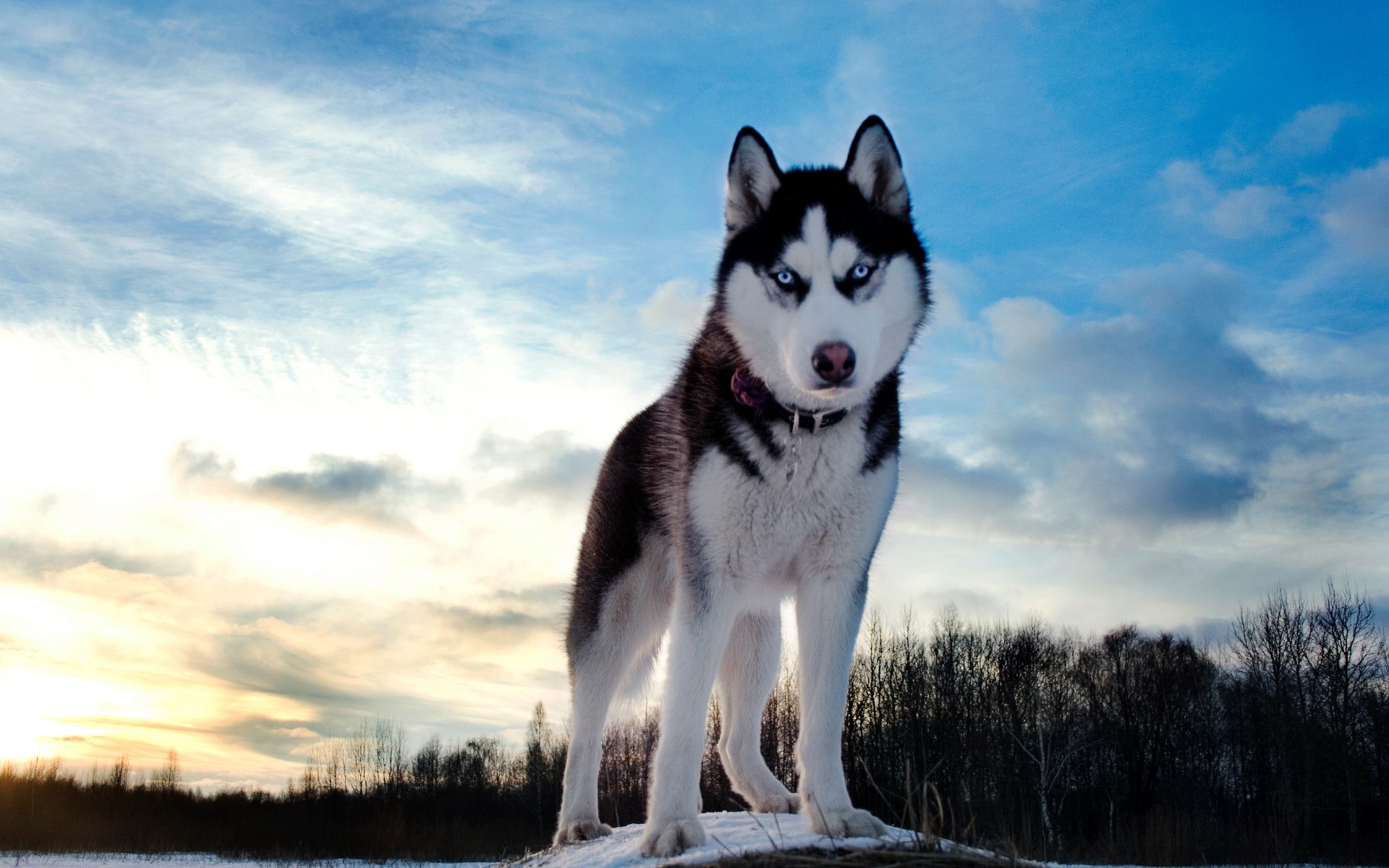
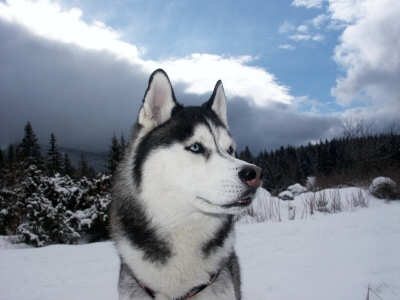
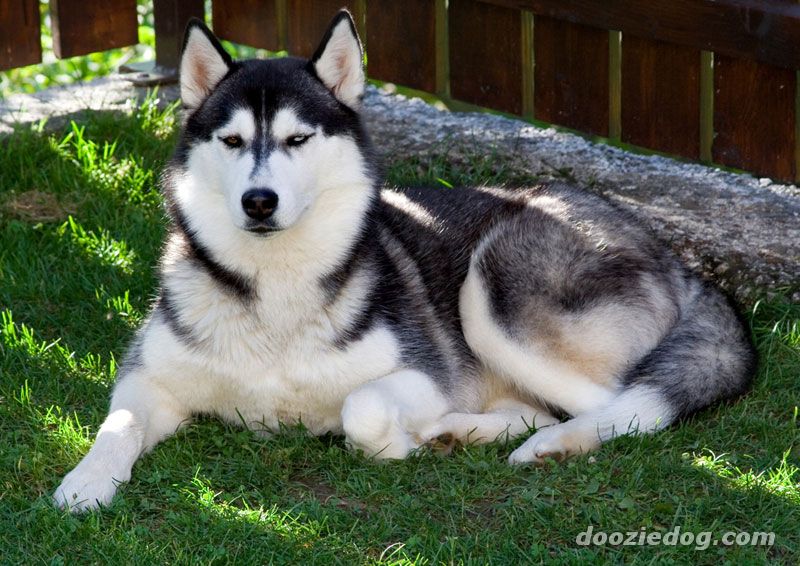

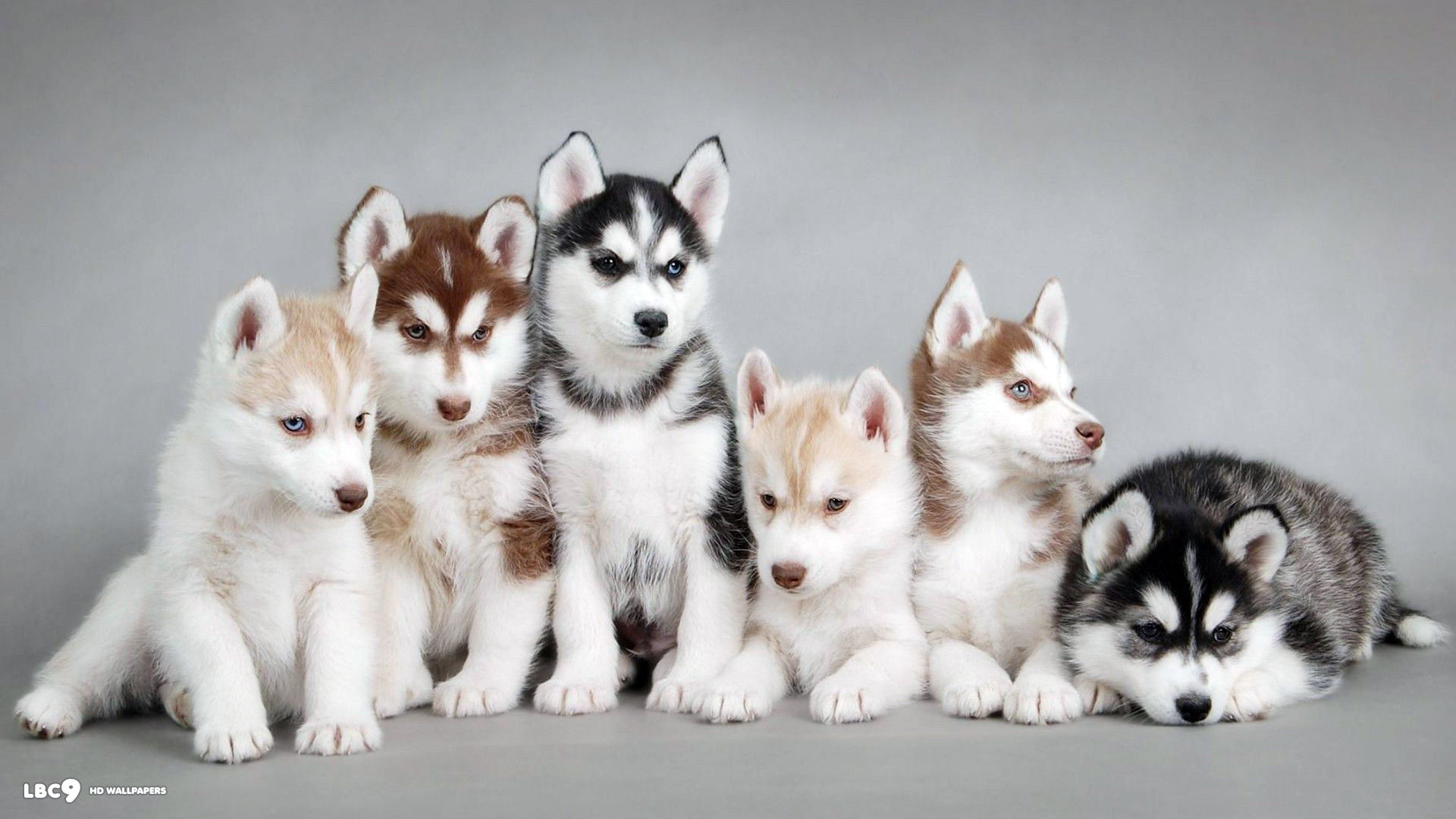
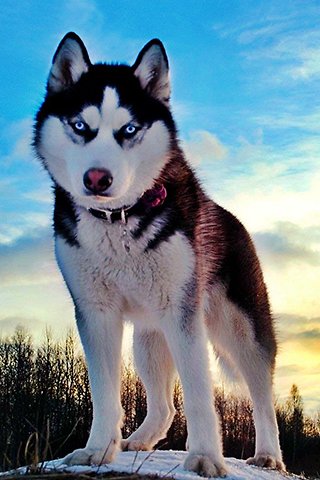


 Animalia Life
Animalia Life